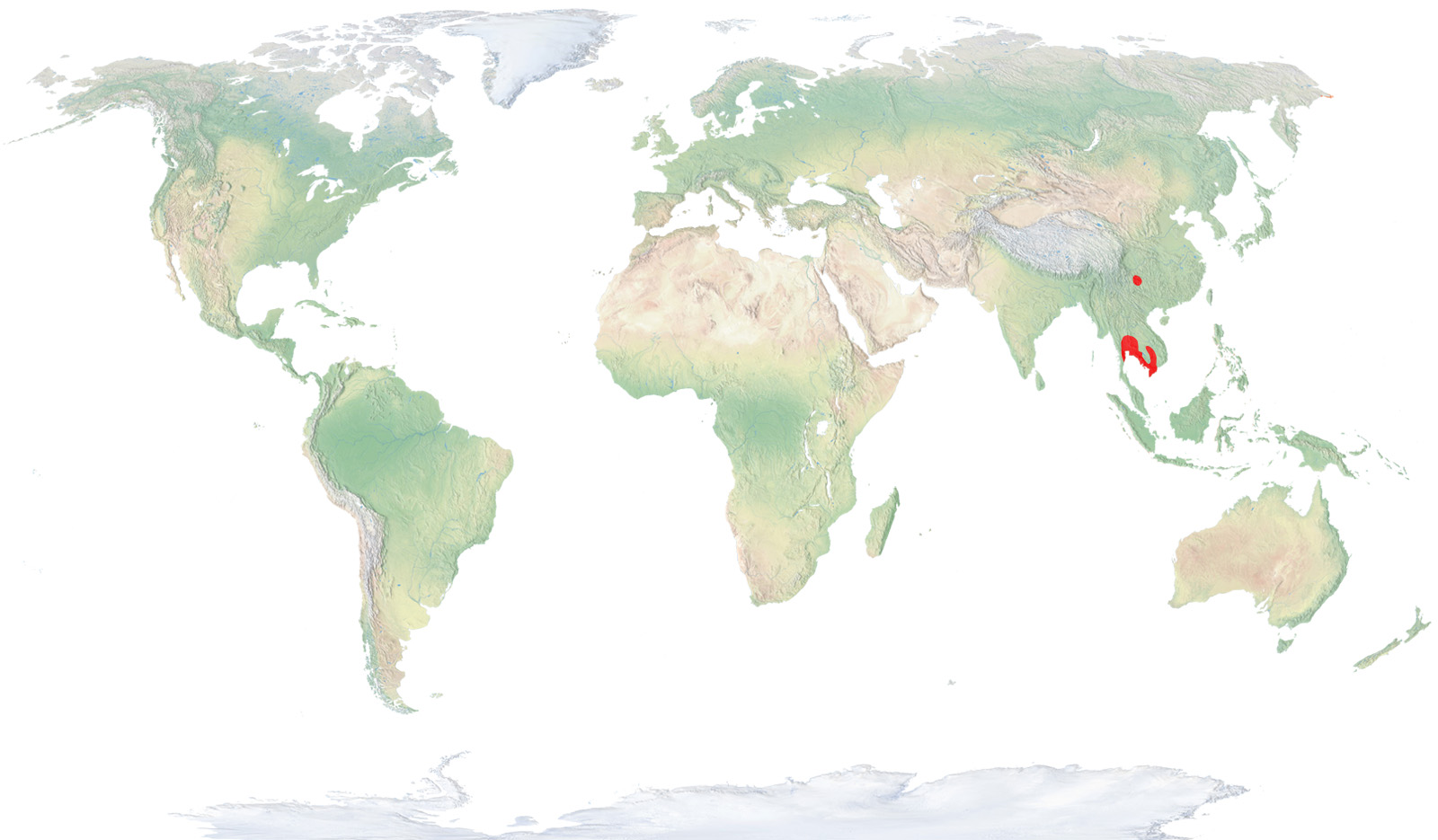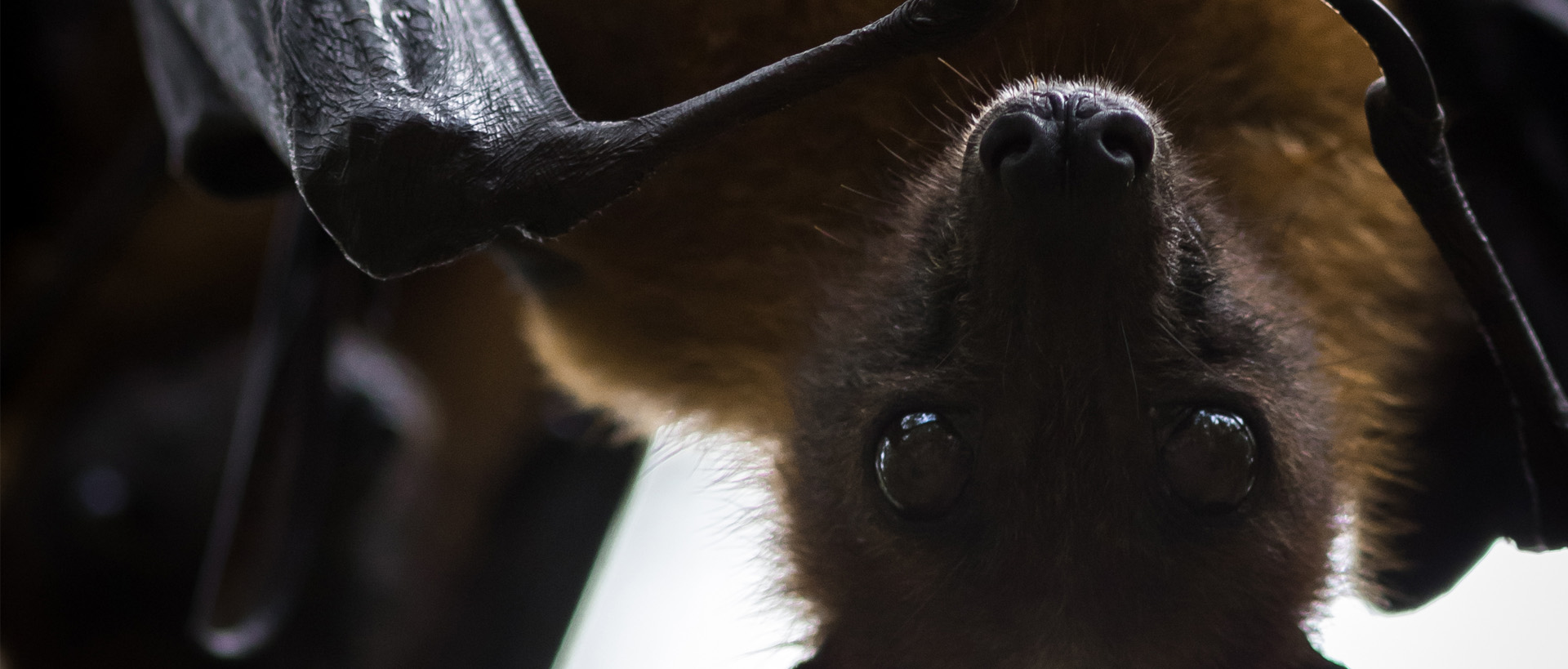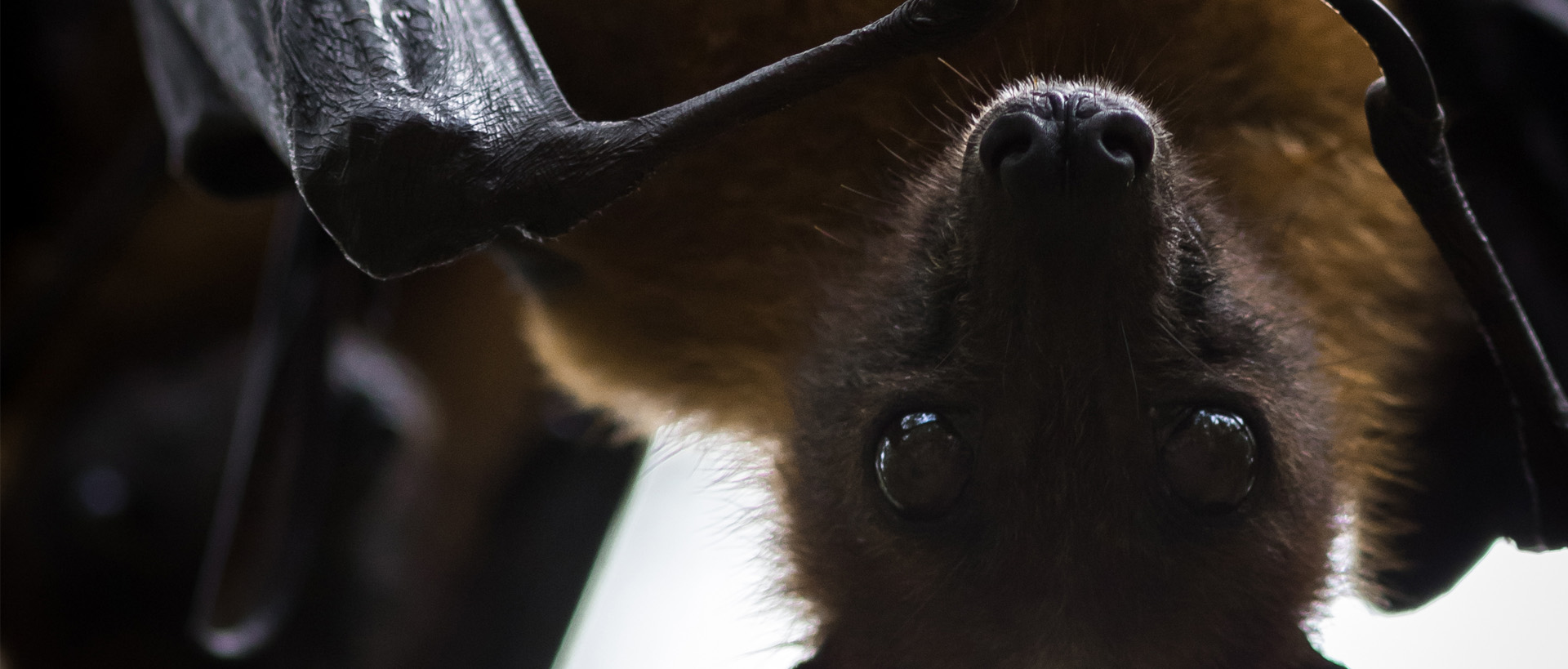Lyle's flying fox
Lyle’s flying foxes are the largest bats in the world, as some species can have a wingspan of up to two metres and weigh around 1.5 kg.
Unlike the majority of animals in the Chiroptera order, which are nocturnal, insectivores and orient themselves using ultrasounds, Lyle’s flying foxes are crepuscular, feed on fruit, flowers and nectar and use their sight to guide them while flying and to find food.
Natural habit
With an isolated population in Yunnan (China) and extending through Cambodia, Thailand and Vietnam.

- Distribution / Resident
- Breeding
- Wintering
- Subspecies
Risk level
- Extint
- Extint in the wild
- Critically endangered
- In Danger
- Vulnerable
- Near threatened
- Minor concern
- Insufficient data
- Not evaluated
Taxonomy
Physical characteristics
Biology
Reproduction
Biology
Lyle’s flying foxes are the largest bats in the world, as some species can have a wingspan of up to two metres and weigh around 1.5 kg. They do not have tails, have a claw on the second digit of each wing and have two incisors on each maxilla. Their faces are reminiscent of a small fox and, hence, its common name.
Rainforests, monsoon forests and mangroves.
Strictly vegetarian, flying foxes feed on ripe fruit, flowers and nectar.
Gestation lasts from 140 to 190 days and only one baby is generally born in each birth, occasionally two. The mother takes the baby right when it is born and it remains clinging to her body for several days. After this period, the baby pup remains on tree branches and holes when the mother goes out to feed.
Gregarious animals, they form large colonies that come together to rest in the immense trees in the jungle. The largest known colony is in Thailand, comprised of some 3000 specimens.
Unlike the majority of animals in the Chiroptera order, which are nocturnal, insectivores and orient themselves using ultrasounds, Lyle’s flying foxes are crepuscular, feed on fruit, flowers and nectar and use their sight to guide them while flying and to find food.
Their populations are shrinking considerably in recent years due to direct hunting, deforestation and the progressive deterioration of their habitat. According to the IUCN (International Union for the Conservation of Nature), the species has diminished by some 30% in the last 15 years.




